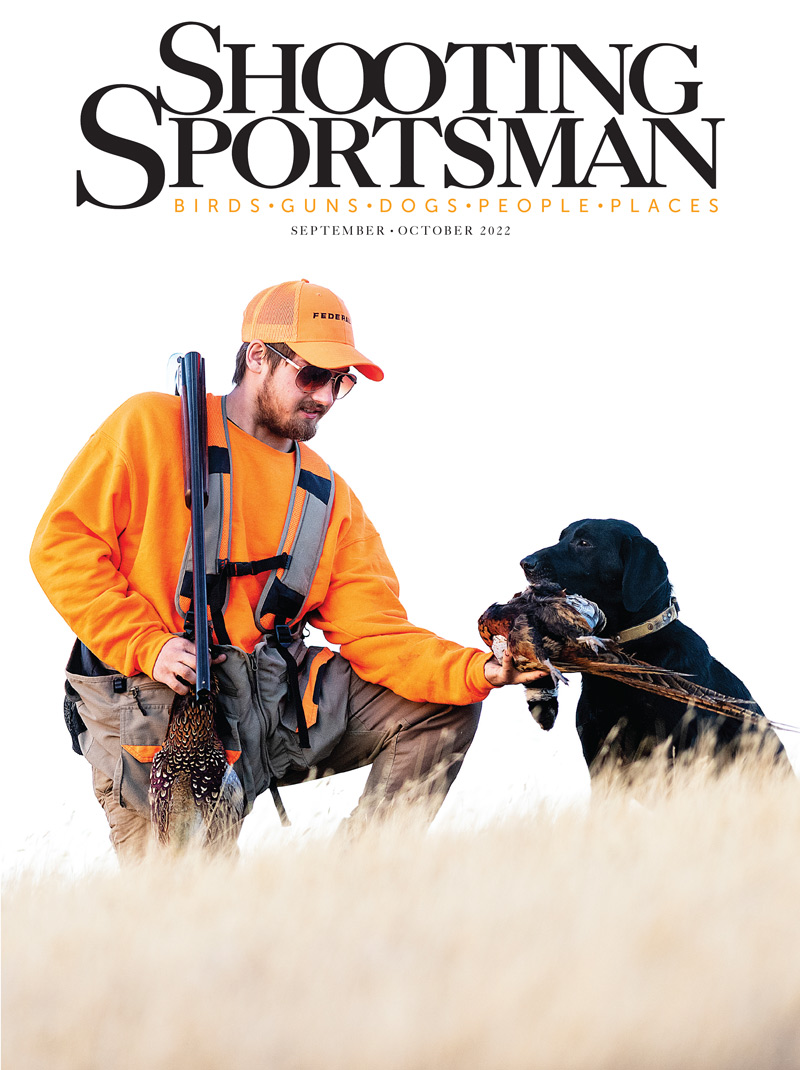Let’s say I told you shotshells can be successfully loaded without any kind of a traditional wad column—fiber or plastic—between the powder and shot? “Impossible,” most shotgunners would say. After all, all of us have been conditioned by more than 200 years of using or reading about shotshell loads, all of which have contained either traditional fiber or plastic wad columns, multiple or one-piece. The result: The shotshell world has never really imagined another way.
Enter Jay Menefee at Polywad, Inc., in Macon, Georgia. In the interest of full disclosure, Jay is one of my favorite humans because he’s always thinking and inventing new ways to load shotshells. I admire that greatly. His latest idea is to experiment with and load shotshells with no traditional fiber or plastic wad(s) of any type between the powder and shot. He sent me both components and loaded shells for testing, and I assure you his idea works, revolutionary as it may seem.
Yes, Jay has learned to successfully load shotshells—lead and nontoxic—sans traditional wad columns. When he owned and operated his shotshell-loading plant, he had two patents and loaded millions of blanks and slugs this way. Recently a US patent was granted to Jay and his associate Jason McDevitt that thoroughly covers the use of biodegradable material such as walnut shells and corncobs as “wads.” His idea, thoroughly tested, is to load ground-up walnut shells (or similar organic material) between the powder and shot in place of fiber and plastic wad columns. Before you laugh too hard, these are the same materials and mechanisms used by rifle and pistol handloaders for polishing brass cartridge cases. The polishing medium used has been ground corncobs rather than walnut shells.
Jay’s idea has a great deal of merit for the future of shotshells. First, using ground walnut shells is much simpler from a mechanical loading perspective, especially regarding high-volume loading such as factory loads, than having to fabricate or buy and then insert multiple fiber or plastic wad columns—even one-piece plastic wad columns—when loading shotshells on high-speed commercial presses. Second, a pound of ground walnut shells is much less expensive than the pound of plastic resin (“oil”) or paper needed for traditional wad columns, not to mention it eliminates the huge overhead expense of building and running molds needed to injection-mold plastic wads. Third, the ground-walnut-shell medium is readily available by the ton, as walnut shells are generally simply thrown out by the food industry that prepares walnut meat for home and commercial use. Fourth, using any ground organic medium as a wad column eliminates the problem of long-lasting, spent-plastic wad litter lying all over the environment. This would also impact but not eliminate the even more expensive biodegradable wads (which still have to be molded) that have been coming to fruition lately and that I wrote about in the May/June 2020 and July/August 2022 issues. So on the whole, replacing traditional wad columns with an inexpensive, ground, biodegradable organic substance has lots of merit.
The next big question, of course, is: How does this idea work in practice? From my testing, if you just dump a loose shot charge of a soft pellet type such as lead or bismuth on top of the ground-walnut medium, many of the pellets become substantially deformed from bore scrub as they travel up the barrel. This degrades patterns. And, of course, if they were hard pellet types such as steel, they would cause severe barrel and choke scoring. Jay’s solution is to use cardboard shotcups or wrappers very much like the ones discussed and illustrated in my July/August column. The result: problem solved with both shot types.
But do soft shot types such as lead and bismuth deform more from setback when the ground-walnut-shell medium is loaded compared to the cushioning provided by collapsible fiber wads or the various designs of cushioning posts on one-piece plastic wads? From my testing there is more setback shot deformation with the ground-walnut medium, which does reduce the patterning effectiveness of soft-pellet-type loads at long range. Such a loading technique is most applicable to relatively close-range shooting applications, such as quail hunting, close-range duck or dove hunting, spreader loads and clay-target games like skeet and most sporting clays stations. So for now at least, longer-range lead and bismuth loads would still be best served by traditional wad columns.
But Jay has yet another newly granted US patent that covers a very simple method of mixing buffer—or in this case walnut, corncob or similar materials—that also serves as the “wadding” in the shot column. The entire cartridge above the powder is simply filled with the granulated material, creating a fully buffered-type load with soft shot types that mitigates much of both the setback and bore-scrub deformation. So wadless doesn’t have to mean close-range loads only.
Last, does a successful gas seal occur when the ground-walnut-shell medium is the “wad column”? From my testing, this is another “yes.” I recorded perfectly acceptable velocities and pressures plus desired low extreme variations with the walnut medium. This was a surprise to me. But evidently the ground medium packs densely enough to properly seal expanding powder gases. Care in the choice of powder granule size, granulated medium size and, if not in a fully buffered-type load, pellet size results in eliminating migration of any of the components and control of the resulting lethal distance for different game or targets.
To consult with Tom Roster or to order his new Advanced Lead & Bismuth Shot Handloading Manual, his HEVI-Shot and HW 13 reloading manual, or his instructional shooting DVD, contact Tom Roster, 1190 Lynnewood Blvd., Klamath Falls, OR 97601; 541-884-2974, tomroster@charter.net.





